After spending the last three years in Singapore, my wife and I recently packed up our bags and embarked on our next adventure. We decided Belize would be the perfect spot.
Laid-back beach towns with beautiful Caribbean water, numerous Mayan ruins throughout the country, dense jungles with wild jaguars, and the second largest coral reef in the world, the Blue Hole—which Jacques Cousteau once called one of the best dive sites in the world (what does he know?)—there was a lot to be excited about and we wanted to see it all.
Uncovering the History of Belize

Belize is a very young, developing country and democracy. That is not to say there is not a sense of history here, it’s quite the opposite, which makes the country and people incredibly unique in contrast to other Latin countries.
While Belize is the only country in Latin America where English is the official language, Belizean Creole, Spanish, and Mayan dialects are often used by native Belizeans. The rich history of Mayan culture, which dates back three-and-a-half millennia to 1500 BC, is not only evident throughout the country in the numerous ruins still being excavated, but also in the roughly 11% of Belizeans today who identify as Mayan. For over 2,500 years, Mayan civilization flourished in the region, leaving behind a legacy that Belizeans are still fully uncovering day by day.
More recently, in the 16th and 17th centuries, European colonization was in full force in the Caribbean and Central America, with Spain laying first claim to the area, and then Britain taking it over after their defeat of the Spanish in The Battle of St George’s Caye in 1798. Valued for its immense supply of mahogany and other resources, Britain would later rename the territory British Honduras and make it a British colony. Even though Britain granted British Honduras self-government in 1964, it wasn’t until 17 years later in 1981 that Belize was granted independence.
All of which is to reiterate that while Belize is officially a newer country on paper, the rich history of the country and its citizens is clearly evident when touring its vast historical sites, and talking to Belizeans about their history and heritage.
They also understand how much their country has changed over the past four decades since independence, and how quickly it is exponentially changing today.

Free Webinar: Belize, The Last Affordable Caribbean Paradise
This Special FREE Online Event, The Caribbean’s Last Affordable Paradise will show you where you can...
➢ Recapture the carefree, contented days of time gone by...spend your time playing in the sea, fishing, swimming, sunning...
➢ Rent a luxuriously furnished two-bedroom condo just steps from the beach for just $1,200 a month. Or buy one—furnished—for as little as $139,000.
➢ Live all in...rent, utilities, groceries, fun and entertainment included...on as little as $1,700 a month—less than $20,000 a year—and vastly reduce your overall tax burden.
All in a friendly and welcoming English-speaking haven just 2 hours from Miami.
Your Hosts...Two of the Most Qualified Caribbean Experts are ready to share all their insights and first-hand knowledge about this often overlooked, low-cost paradise.
Sign up for our daily postcard e-letter and you’ll get FREE and INSTANT access.
Eating Traditional Fry Jacks in Placencia
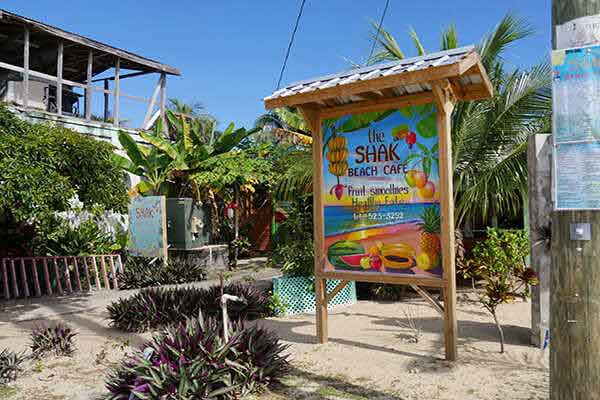
Eager to discover Belize’s rich heritage for ourselves, we set off to explore this Caribbean gem. After a two-and-a-half-hour flight from Dallas, we hopped a puddle jumper for our 45-minute flight from Belize City to Placencia Airport, a small strip on the peninsula just north of the village.
Placencia is located on the southern tip of Belize, a peninsula which is approximately 19 miles long, but just a half-mile wide. Mainly a fishing village that has expanded to accommodate a growing number of expat residents and tourists, Placencia still has a small Caribbean-fishing-village vibe, and that made it the perfect first stop.
Our first morning, we walked out our front door and onto “the smallest main street in the world.” This four-foot-wide pedestrian thoroughfare can be quite bustling in the morning, with locals, and a few expats, nodding and saying good morning to one another.
We strolled down to a spot at the southern tip of the village called “The Shak,” a beach-style outdoor restaurant with a great vista of the public beach, main pier, and plaza where a lot of the island tours launch from. We sat at a table with a view worthy of the cover of a travel magazine, the water a perfect mixture of blue and green, the gentle breeze cooling so it felt pleasant sitting under our palapa. It was one of the many perfect Caribbean mornings we were on our way to experiencing in Placencia, but that first morning at The Shak we will always remember as the place where we had our first experience with Belizean fry jacks.
Fry jacks are pieces of deep-fried dough, usually in the shape of a triangle or circle, and typically served as a breakfast item. Similar to beignets, they can be eaten by themselves, alongside stewed chicken (another typical Belizean dish), or they can come stuffed—stuffed jacks with eggs, cheese, and ham, or chicken and beans, are my favorites, but really, they’re all delicious. My wife and I ate fry jacks pretty much every morning for almost 30 days straight, we were obsessed!
It wasn’t just fry jacks that we feasted on in Placencia. We ate fresh lobster at Omar’s, a great local restaurant in the village which also doubles as his art studio, and amazing barbecue at Sheldon’s, which is actually not a restaurant but a twice-monthly pop-up barbecue pit.
We also ate at our share of expat restaurants in Placencia, and there are a couple that are worth mentioning. Rick’s is a great spot that offers a variety of cuisines, including local Belizean staples, Italian food, and some American fare. The restaurant caters to a great mix of expats and locals on any given night, and it seemed like it was constantly packed—which made sense once we went there a couple times as the staff is great, the cocktails are really good, and the atmosphere is festive and fun.
Rumfish y Vino is another great spot, and probably the most upscale and priciest place to eat in the village. The restaurant has a really nice indoor-outdoor feel, their service is impeccable, and their food is as good as advertised. Their lionfish crudo was heavenly, and their short rib lasagna, which I was a little hesitant of at first, was absolutely incredible.
To work off all the great food we were eating, we did our share of walking on the beach, biking around the peninsula, touring the Garifuna community of Siene Bight, and exploring Maya Beach. We had already planned a couple of the Mayan tours and some diving for later in the trip, so we didn’t do any of that while in Placencia, but they are all available from the village if it’s your only stop in Belize.
Exploring Mayan Sites in San Ignacio

After an incredibly relaxing week, Deborah and I, recharged and ready to go, rented a car in the village, loaded up our stuff, and headed out to San Ignacio. Located northwest of Placencia, and very close to the Guatemalan border, it took us three hours to get to San Ignacio along seemingly brand-new highways with scenic views.
The last half of the trip traverses the famous Hummingbird Highway, a fun drive that took us winding through jungle landscapes and mountain ranges that included a sleeping giant and cenotes, one of which—the Blue Hole (not the one previously mentioned)—we stopped and swam in.
San Ignacio is located in Belize’s Cayo district, and its population of approximately 24,000 people made it the biggest city we stayed in in Belize. Most residents of San Ignacio were born and raised there. As remote as the city is, it has very few expats, so the familiarity of locals and the absence of expats gives it an authenticity we didn’t feel in other parts of Belize.
Aside from seeing San Ignacio and the Cayo region, our main purpose of traveling to the region was to see Actun Tunichil Muknal (ATM) and Caracol, two amazing Mayan sites that are an absolute must-see.
ATM is an ancient Mayan archaeological site that is still being excavated. Located deep in a cave in the center of a revered mountain, the site can only be accessed with a licensed guide and requires swimming under stalactites and climbing up huge rocks and trails the equivalent of six stories high. Although it’s quite the trek to get into the heart of ATM, at the main Mayan alters you will see ancient skeletal remains left behind from sacrifices to the gods, and over 2,000-year-old Mayan ceramics and stoneware.
Our guide for ATM was the world-renowned Gonzo, an archeologist who works for the government to continually help preserve and excavate the site. Gonzo gave us one of the most unique tours and poignant days I can remember. His dedication to, and love of, his country, Mayan culture, and his work was truly inspiring. If you can only do one tour when in Belize, make sure it is ATM.
Caracol is another Maya archaeological site we visited while in San Ignacio, and while it currently takes over two hours each way to reach the site—mostly on a road that will make your lower back bark at you for days—we’re glad we experienced this ancient site.
Caracol sits in the Vaca Plateau in the foothills of the Maya Mountains. Similar to ATM and many other Mayan ruins, the ancient city, which is around 200 square kilometers, is only partially excavated with many areas still covered by overgrown jungle, mounds of dirt, and huge trees that have grown over hundreds of years of desertion.
Caana, which means “Sky Palace” in Maya, stands at 141 feet high, which was not only incredibly high when it was built, but remains the tallest structure in Belize today. Unlike Chichen Itza or Ek Balam in neighboring Mexico, today you can still climb to the top of Caana and other central acropolises in the city, such as the astronomic observatory.
Our experience with Belizean staple cuisines continued in San Ignacio. We were very pleased when Gonzo stopped at two different local street vendors to pick up our lunch for our tour of ATM. Belizean stewed chicken, rice and beans, pork chops, and Belikin, the local Belizean beer—which is pretty good for a light, inexpensive lager (normally around two dollars for a nine-ounce bottle).
We also continued our love affair with fry jacks in San Ignacio, eating them at the hotel we stayed in overlooking the entire valley, and at Hode’s Inn, a great place in town close to the Macal River.

Free Webinar: Belize, The Last Affordable Caribbean Paradise
This Special FREE Online Event, The Caribbean’s Last Affordable Paradise will show you where you can...
➢ Recapture the carefree, contented days of time gone by...spend your time playing in the sea, fishing, swimming, sunning...
➢ Rent a luxuriously furnished two-bedroom condo just steps from the beach for just $1,200 a month. Or buy one—furnished—for as little as $139,000.
➢ Live all in...rent, utilities, groceries, fun and entertainment included...on as little as $1,700 a month—less than $20,000 a year—and vastly reduce your overall tax burden.
All in a friendly and welcoming English-speaking haven just 2 hours from Miami.
Your Hosts...Two of the Most Qualified Caribbean Experts are ready to share all their insights and first-hand knowledge about this often overlooked, low-cost paradise.
Sign up for our daily postcard e-letter and you’ll get FREE and INSTANT access.
Diving in Belize Barrier Reef, Caye Caulker
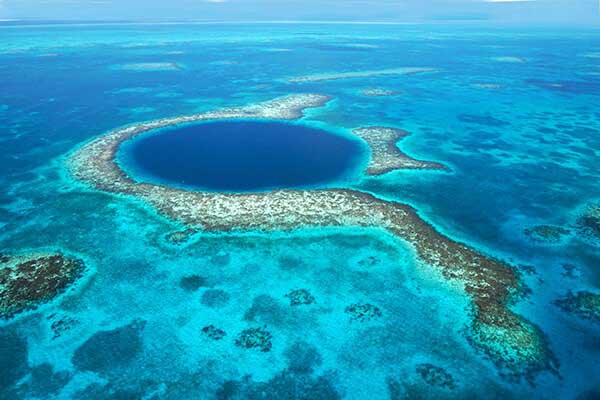
After four days in San Ignacio, trekking through the jungle and Mayan ruins, we were ready to get back to the beach, so we headed out and drove the Western Highway back to Belize City. We dropped the car at the rental agency and boarded a ferry to Caye Caulker, a small island northeast of Belize City, approximately one hour by boat across heavenly turquoise water.
A small, narrow island that is divided by a small channel called “the Split,” Caye Caulker exudes that quintessential island feel. The dirt roads are dominated by bikes and golf carts, and the first thing you notice is you can, seemingly, see water from any spot on the island.
Our room on the third floor offered a picturesque view of Caye Caulker’s eastern coast, which features crystal-clear Caribbean water that breaks as it crosses the enormous reef about a mile out.
Our plan in visiting Caye Caulker first was to experience Belize’s island living on a smaller scale before finishing our trip in San Pedro on Ambergris Caye, by far the country’s most touristed and popular destination.
It’s also a great island to get your diving certification, or in my wife’s case, get recertified. There are a number of recommended dive shops on the islands—we chose Frenchie’s and had a great experience.
Belize Barrier Reef is the largest in the Northern Hemisphere, and second largest in the world behind Australia’s Great Barrier Reef. Many experienced divers have called Belize’s reef the most beautiful dive experience in the world, and we would agree.
A regular dive will not only garner incredible schools of colorful fish, but normally a plethora of huge eagle rays swimming around you, barracudas, beautiful blue tangs, grand turtles, and even large nurse sharks, especially in Shark Ray Alley.
If diving isn’t your thing, or you don’t have time to get certified, you can see all of the aforementioned fish with a simple mask and snorkel, and you don’t have to get very far out to see them. If you do end up renting a boat or doing a tour, we highly recommend Hol Chan, which is Mayan for “Little Channel.” Hol Chan is a marine reserve, and its location is at a natural break in the reef, creating a great environment for fish and other marine life to thrive.
Snorkeling and diving are just a couple of reasons Caye Caulker is a popular destination for Belizean and Mexican tourists, as well as expats from Canada and the U.S., but overall the island has a very “local,” sometimes sleepy, vibe that we really enjoyed. Restaurants are often attached to people’s homes in the front, and there were few very large-scale developments on the island.
Increasing the Pace in Ambergris Caye
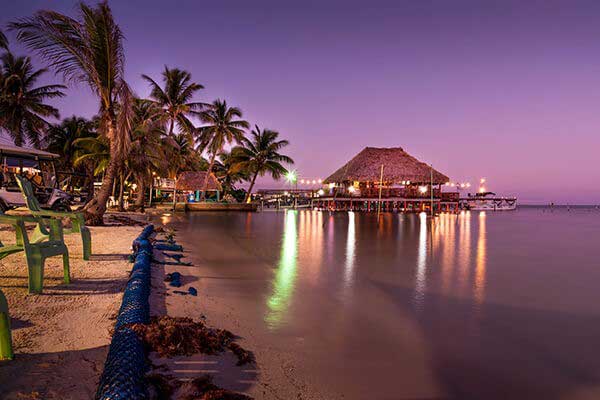
San Pedro, the biggest city on Ambergris Caye, has exploded over the last 15 years, and so has the price of real estate in the city and the surrounding island.
Ambergris Caye was the destination we were most excited about seeing on our trip, which is why we saved it for last. After a very enjoyable, slow-paced week in Caye Caulker, we boarded the ferry again for the short trip to San Pedro, ready to take the pace of our vacation up a notch.
The view from the ferry ride into San Pedro immediately showed the investment that has poured into the island over the past couple of decades, with the shore north and south of San Pedro covered in huge-scale resorts, many of them brand new. The island looked and felt much different than any of our previous locations in Belize.
The first thing that was obvious was that we were going to need a golf cart to get around this much larger island, so after checking in and getting settled, I ran out and rented a shiny red cart for the two weeks we would be staying there.
There are only a few roads on Ambergris Caye, making a lot of places boat access only. This can make it challenging to see more remote parts of Ambergris Caye, but it’s also a huge part of the charm and adventure.
Deborah and I ended up maximizing our golf cart rental, bouncing around as far as we could, north, south, east, and west, wherever the main roads would take us. One of the most popular spots where locals and expats like to head out to is Secret Beach, a small collection of resorts and rental homes on a beach located on the west coast of Ambergris, just north of San Pedro.
It’s not so secret anymore, but it’s still a fun trek through the heart of the island, and the payoff is absolutely spectacular. While a little sparse on actual sandy beaches, Secret Beach has some of the most beautiful, pristine water we’ve ever waded into. Many of the resorts have tables in the water, which only comes up about waist high, even when you get a hundred or so yards out.
Deborah and I sat at a table as far out as we could, watching the fish swim around us as our waiter brought drinks and lunch out to us. The spot we chose had a great DJ, but if you’re looking for more of a serene experience, there are places that are more low-key.
Another fun spot we loved and visited multiple times was The Truck Stop. Located off the main road just ten minutes north of town, The Truck Stop is essentially a combination of food trucks and unique spaces along the lagoon that might be familiar to most expats. The area has a great hipster feel and is in a unique setting, so definitely worth a visit. Their weekly events, like movie night, are super fun as well.
In addition to using our wheels to explore the island, we also made a point to walk around San Pedro, and to try a lot of restaurants that local Belizeans recommended. One of them was El Fogon, which is an absolute must if you find yourself in San Pedro.
Aba Isieni Arzu Kitchen was another local gem that was referred to us by the bartenders we befriended at our favorite bar, Palapa Bar, and we were happy they did. We enjoyed piles of chicken and pork, rice and beans, and potato salad, all for a few dollars, and it was packed with locals every day.
We ended up eating at a lot of the places the guide books and expats recommended as well, and there are a few worth mentioning. Jambel Jerk Pit, which is located close to the San Pedro Water Taxi, has a beautiful setting overlooking the water, and jerk chicken to die for. We also enjoyed Caramba and their selection of fresh seafood and friendly staff.
The pace of San Pedro is just our speed. Mornings are typically blessed with Caribbean sun illuminating the sea as people walk along the beach or sit outside and enjoy their coffee. As the day progresses, markets open, the town gets busier, and it suddenly feels like a bustling little beach town with fun shops and galleries to see. After a late lunch and a quick siesta by the pool, it’s off for more exploring, normally a different part of town or the island, usually ending up at a local spot for a festive happy hour on the water before heading to dinner.
Our time in Belize flew by, so much so that we were already planning our next trip back before we even left. We truly can’t wait to get back to this magical country. Who knows, maybe even call it home someday—we loved it that much. We’ll keep you posted!

Free Webinar: Belize, The Last Affordable Caribbean Paradise
This Special FREE Online Event, The Caribbean’s Last Affordable Paradise will show you where you can...
➢ Recapture the carefree, contented days of time gone by...spend your time playing in the sea, fishing, swimming, sunning...
➢ Rent a luxuriously furnished two-bedroom condo just steps from the beach for just $1,200 a month. Or buy one—furnished—for as little as $139,000.
➢ Live all in...rent, utilities, groceries, fun and entertainment included...on as little as $1,700 a month—less than $20,000 a year—and vastly reduce your overall tax burden.
All in a friendly and welcoming English-speaking haven just 2 hours from Miami.
Your Hosts...Two of the Most Qualified Caribbean Experts are ready to share all their insights and first-hand knowledge about this often overlooked, low-cost paradise.
Sign up for our daily postcard e-letter and you’ll get FREE and INSTANT access.
Related Articles
Is Belize A Safe Place To Live?
Five Places to Live in Belize; Two to Avoid
Upcoming Conferences
The Only 2024 Fast Track Panama Conference
If your dream retirement involves stunning beaches… lush green mountains… a warm climate with no hurricanes… first-rate healthcare… incredible value for money (a couple can live well on $2,200 a month)… and the World’s #1 Retiree Discount Program…
Join our Panama experts and expats in February and discover why Panama could be your perfect paradise.
REGISTER NOW, SEATS LIMITED: EARLY BIRD DISCOUNT HERE

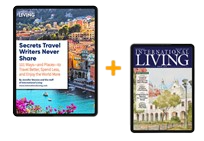
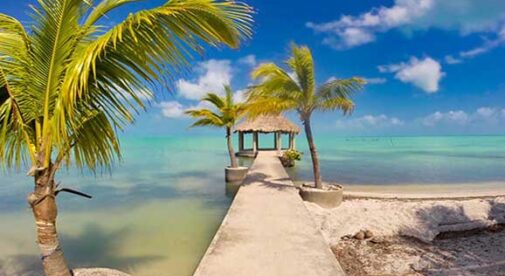
.png)